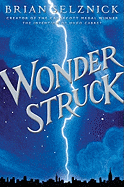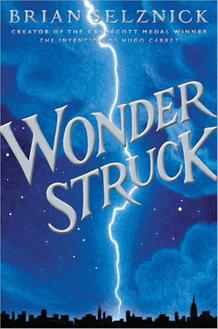
 With this brilliantly constructed novel, told alternately in prose and visual sequences, Brian Selznick may have topped even his Caldecott Medal–winning The Invention of Hugo Cabret. He expands on the framework he created for Hugo as he tells the story of 12-year-old Ben Wilson in words, and the story of 12-year-old Rose Kincaid in images. When the two stories--which begin 50 years apart--join, their convergence delivers an intense emotional impact. That's due, in part, to the way Selznick creates ripples of resonances in the two stories, and partly because he taps into the universal passions of childhood.
With this brilliantly constructed novel, told alternately in prose and visual sequences, Brian Selznick may have topped even his Caldecott Medal–winning The Invention of Hugo Cabret. He expands on the framework he created for Hugo as he tells the story of 12-year-old Ben Wilson in words, and the story of 12-year-old Rose Kincaid in images. When the two stories--which begin 50 years apart--join, their convergence delivers an intense emotional impact. That's due, in part, to the way Selznick creates ripples of resonances in the two stories, and partly because he taps into the universal passions of childhood.
Although Ben's story unfolds in prose in 1977, it begins in images, with a dream of two wolves chasing him. Selznick treats the pages like film stills; the camera zooms in on the alpha wolf, then its face, until the reflected light of one wolf's eye is all that we see. This bright light connects with Ben's love of the stars. Ben is a collector. He places the things he collects in a wooden box with a wolf on the cover. Its contents include two small gray stones created nearly two billion years ago by the same meteorite crash that shaped the area in Gunflint Lake, Minn., Ben's home. The boy lives with his aunt and uncle, 83 steps from the house he had shared with his mother until her recent death in a car crash. Though Ben's mother told him that "he'd never be lost as long as he could find the North Star," he no longer believes it's true. At one point, as he stares at a meteorite, he wonders, "Could you still make a wish even after it had fallen to Earth?"
Rose's story starts with a close-up and then the camera backs up, widening our view. The first image is the light in the eyes of a glamorous woman, dressed to the nines in 1927 fashion. Next we see the woman's name: Lillian Mayhew. The scope widens to include the headline over Mayhew's photo: "Today's Stars" in MovieStar magazine. A postcard off to the side reveals the young heroine's name, Rose Kincaid, in a note of birthday greetings, signed "Love, Walter." Someone knocks at the door to Rose's house. The action cuts back to Ben's story; he sees a light on in his mother's house. The North Star and the meteor in Ben's thoughts reverberate with the star of Rose's movie magazine. The suspense of a knock on the door and the terrified look on Rose's face connects with the impossible hope taking hold in Ben as he goes in search of the person who turned on the light in his mother's room.
Ben does not find his mother; he finds his cousin Janet instead. But he also discovers a book, Wonderstruck, published by the American Museum of Natural History. The inscription leads him on a journey to Manhattan to that very same museum, and the book puts a name to his hobby: curator. "In a way, anyone who collects things in the privacy of his own home is a curator," the book says. When Rose sneaks out of her house to sit in the movie theater, her face telegraphs a sense of wonder, too. Like Ben, Rose is also a curator. She constructs miniature buildings of New York City. In her bedroom in Hoboken, overlooking the Manhattan skyline, she sculpts the architectural monuments across the Hudson out of magazine and newspaper pages. Not until a third of the way into the book do we learn that she is deaf. She, like Ben, runs away to New York City.
Selznick does for New York in this book what he did for Paris in Hugo. He introduces the magic of the city and its untold secrets, its alleys and secret doorways. The grit and graffiti of the 1970s spill from the pages; the newly built World Trade Towers claim the south end of the island. The timing of his cuts back and forth between the stories connect Ben and Rose's experiences with wit and double entendres. Upon second and third readings, we uncover carefully placed details that connect the characters--Ben to the father he never met, Rose to Walter. The endnotes add yet another layer of surprise (as does placing Hugo next to Wonderstruck, spine out.) Like an intricate mosaic, Selznick's subtle patterns connect elements of Ben's and Rose's lives in a master design: the pull of New York, their love of the stars, their calling as curators. The way Selznick bridges their stories over half a century will leave you wonderstruck.--Jennifer M. Brown

